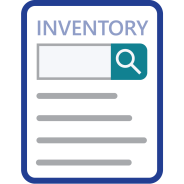
Choose from 5 options:
Some introductions are not eligible for the exempted or reported categories.
The introductions described on this page are not eligible for the exempted or reported categories. Start at 1 and work down the page to see if any of these apply to your introduction.
If your chemical is on the Inventory with a condition of introduction or use, you must ensure you can meet the conditions when you introduce the chemical. An Inventory listing can include a condition about:
If your introduction is on the Inventory with a condition of introduction or use and you cannot meet the conditions, it is not authorised under our exempted or reported categories. You must apply to vary the terms of the Inventory listing. We must approve your application before you can start introducing the chemical.
If this applies to your introduction, go to Apply to vary the terms of a listing on the Inventory (fee applies).
If this does not apply to your introduction, continue to 2. Persistent organic pollutants (POPs) and chemicals subject to the Rotterdam Convention.
If this applies to your introduction, go to Apply to vary the terms of a listing on the Inventory (fee applies).
If this does not apply to your introduction, continue to 2. Persistent organic pollutants (POPs) and chemicals subject to the Rotterdam Convention.
Your introduction is in the assessed category and you must apply for an assessment certificate if any of these scenarios apply, unless you meet an exception*:
*Exception 1: your introduction is in the listed category.
*Exception 2: chemical is only used for research or analysis and introduced at 100 kg or less in an AICIS registration year.
The Persistent Organic Pollutants Review Committee has decided that the chemical meets the POPs screening criteria set out in Annex D of the Stockholm Convention. These chemicals are shown below. For more information about these chemicals, refer to POPRC Recommendations.
Chemical name CAS number Chlorypyrifos 2921-88-2 Chlorinated paraffins with carbon chain lengths in the range C14-17 and chlorination levels at or exceeding 45 per cent chlorine by weight - Long-chain perfluorocarboxylic acids, their salts and related compounds Various Octabromodiphenyl ether 32536-52-0
- The AICIS Executive Director has decided that the chemical meets the Annex D screening criteria for POPs while making the decision about issuing an assessment certificate for that chemical, or based on an AICIS evaluation done on that chemical.
This applies to this chemical:
Chemical name: Benzene, 1,1'-(1,2-ethanediyl)bis[2,3,4,5,6-pentabromo- (also known as decabromodiphenylethane or DBDPE)
CAS number: 84852-53-9
If you wish to trade (import or export) a chemical that is listed in Annex III to the Rotterdam Convention and in Section 71 or 73 of the Industrial Chemicals (General) Rules, you must apply in writing and pay a fee. This application process is known as the prior informed consent (PIC) procedure.
Next: Step 2: Introductions that are categorised as exempted